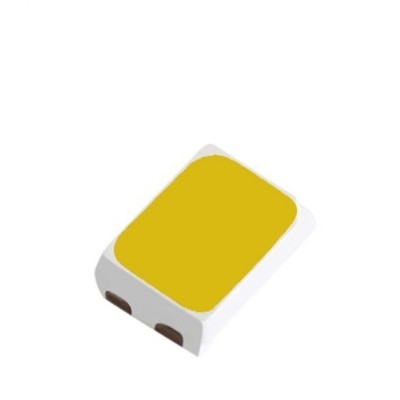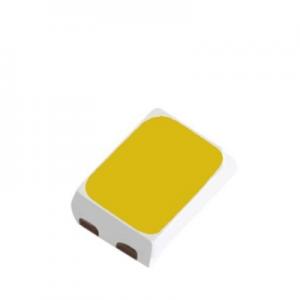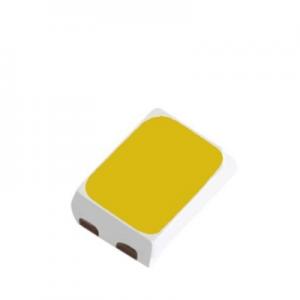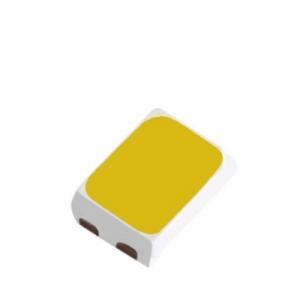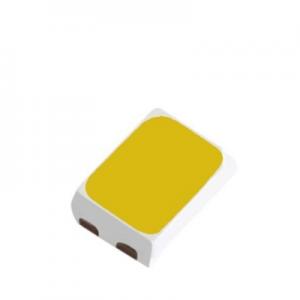smd led positive negative
- Category: 2016 SMD LED
- Brand:ARKTECH
- delivery date: 7 to 9 working days
- payment method: We offer payment options such as Paypal, TT (Telegraphic Transfer), or LC (Letter of Credit)
- Our team offers all-round technical support, including designing according to your requirements, selecting the best solutions based on cost and reliability, principle and LAY-OUT design, customizing s
| Product name | smd led positive negative |
| Keyword | 4v smd led strip,smd led light bar,g9 smd led light bulb 2.5 watt,bottom mount bicolor smd led,5630 smd led pcb,smd led 3014,aerpro 60 smd led strip light 1m white |
| Place of Origin | China |
| Brand | ARKTECH |
| Current | 149MA |
| Power | 0.8W |
| Voltage | 2.8V |
| Raw material | Copper bracket/ pure gold wire |
| Quantity | 2193pcs/reel |
| Dimensions | 5.4mm*3.8mm*2.5mm, (Contact us for specific information to confirm) |
| Applicable Industries | mobile phones, etc. |
| Color | purple |
| Weight | 19mg |
| Product Description | 48 smd led interior lamp light,3w high power smd led,SMD LED 7020 Green Color 0.5W,SMD 7020 LED White TV backlight 0.5W,0.5 watt smd led,SMD 4014 LED black light 0.2w chip-It is a new surface packaging technology that encapsulates LED chips in tiny weldable packaging films and performs surface spot welding on the PCB substrate, thus improving the reliability and production efficiency of LEDs. Compared with traditional LED packaging, SMD LED has the advantages of small size, large light-emitting area, high power, low packaging height, and multiple color temperatures, and can greatly reduce costs through automated production processes. |
| delivery date | Our standard delivery time is 7 to 9 working days. |
| payment method | We offer payment options such as Paypal, TT (Telegraphic Transfer), or LC (Letter of Credit). |
| Life span | 51015 + hours (Contact us for specific information to confirm) |
| warranty | We provide a warranty period of 2 years |
| Advantage | We keep good quality and competitive price to ensure our customers benefit |
| Packing | 16x10.31x16mm(Contact us for specific information to confirm) |
| Sales country | All over the world for example:Bangladesh,Honduras,South Africa,Albania,Togo,Romania,Estonia |
| MOQ | 5 reel(Contact us for specific information to confirm) |
| customization services | We welcome customization requests for our products |
| production capacity | We have the capacity to produce 93kk pieces of LEDs per month. |
Segment led display, Custom LED display, Through hole LED, High power LED(Please contact us for specific information about Segment led display)
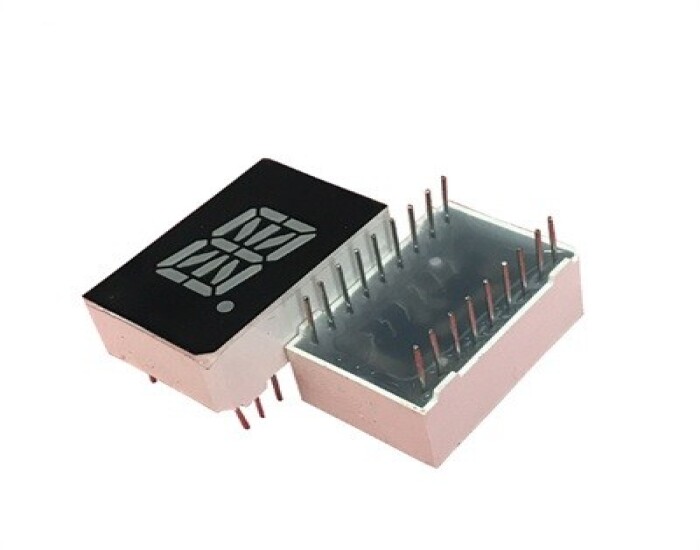
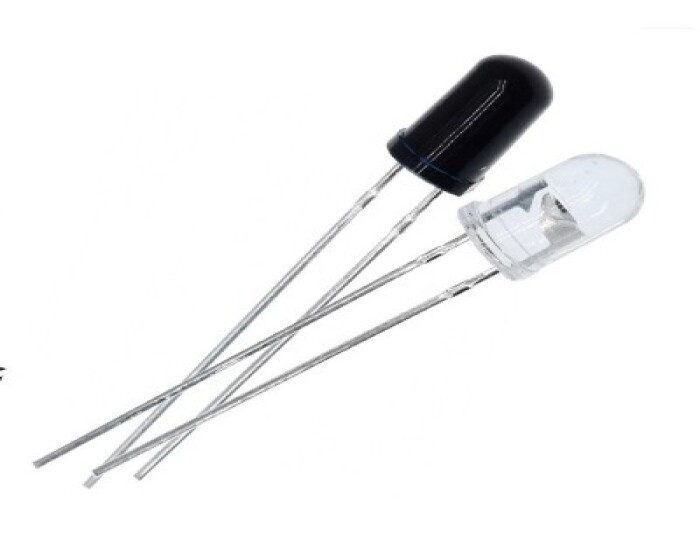
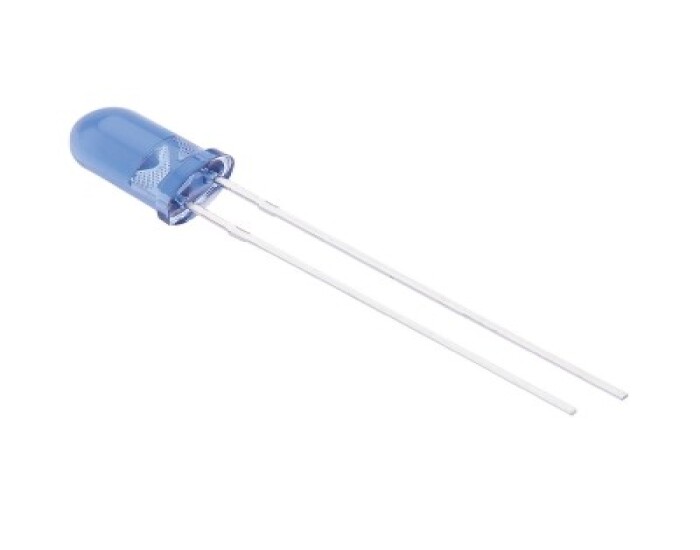
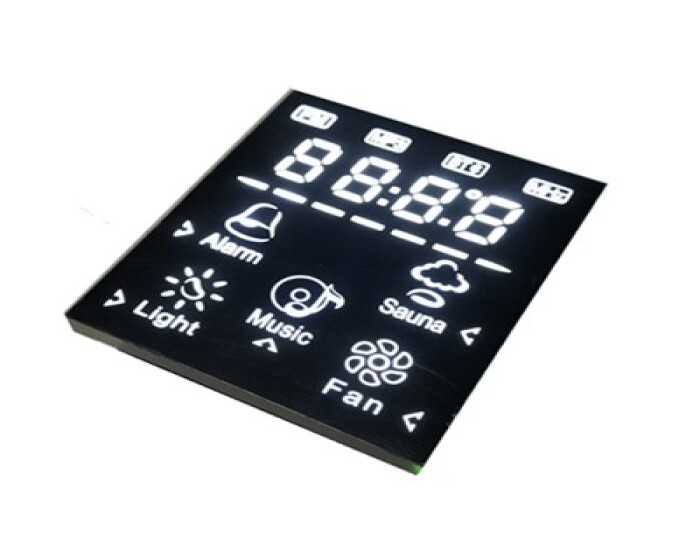
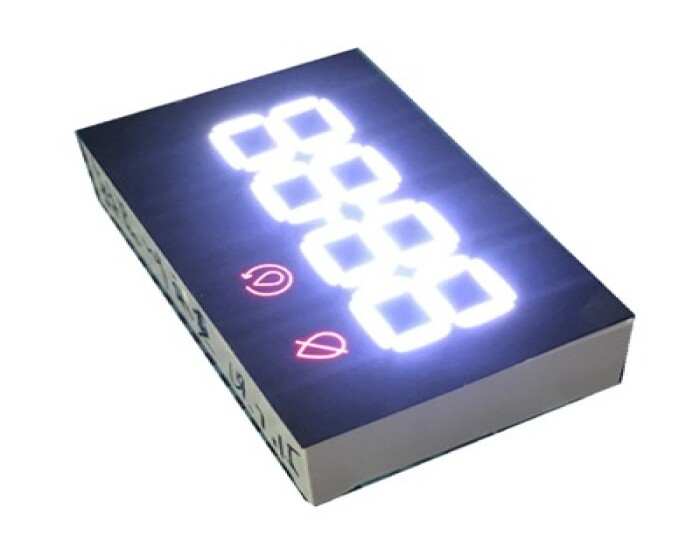
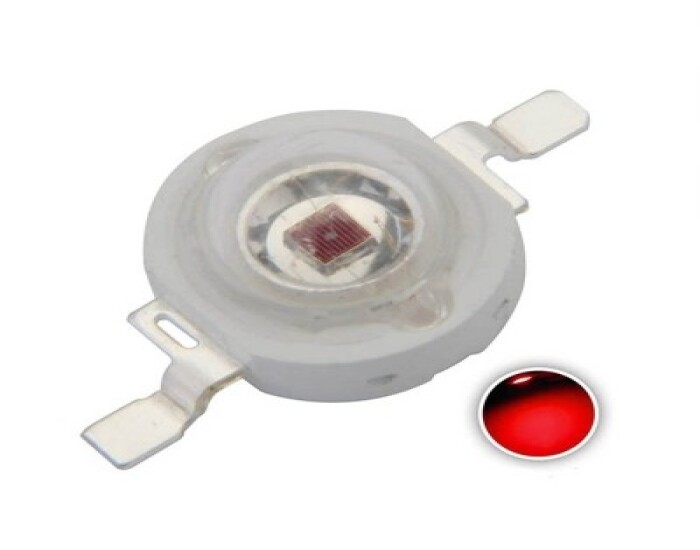
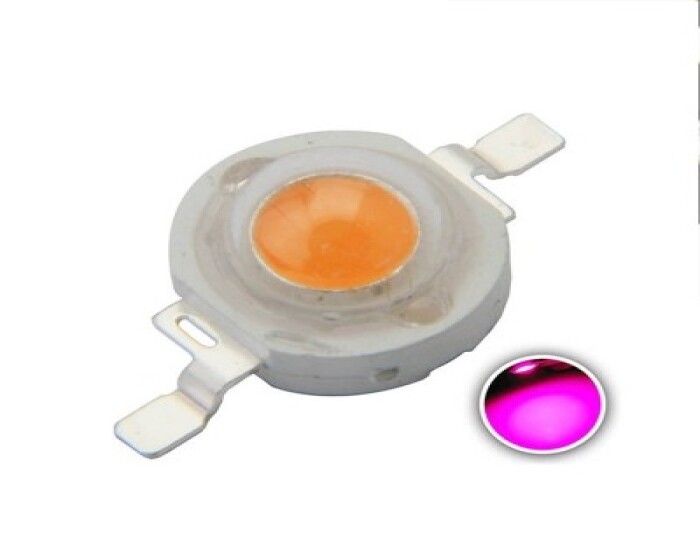
smd led positive negative services FAQs Guide
Are you looking for a quick review guide about smd led positive negativeservices?
An ultimate FAQ buying guide is available to help you.This guide contains all the information about all the important facts, figures, and various processes regarding smd led positive negative services.
Let’s continue!
2.How does the efficiency of smd led positive negative compare to other lighting options?
3.Are there any color options available for smd led positive negative?
4.What is the difference between smd led positive negative and COB LED?
5.What is the lifespan of an smd led positive negative?
6.How does the size of smd led positive negative affect its performance?
7.What are smd led positive negative lights?
8.What is the lifespan of smd led positive negative compared to traditional LEDs?
9.How does smd led positive negative handle heat dissipation?
10.Are there any size limitations for smd led positive negative?
11.Are there any regulations or certifications for smd led positive negative?
12.About smd led positive negative production skills training
13.Is smd led positive negative resistant to shock and vibration?
14.How does the color temperature of smd led positive negative affect its use?
15.About smd led positive negative R&D capabilities
1.Does smd led positive negative produce any UV emissions?
We operate our smd led positive negative business with integrity and honesty.
No, SMD LED does not produce any UV emissions. SMD LED lights use a semiconductor material to produce light, which does not emit UV radiation. However, some SMD LED lights may have a small amount of UV emissions due to the use of phosphors in the LED chip, but this is typically very low and not harmful to humans.
2.How does the efficiency of smd led positive negative compare to other lighting options?
We should have a stable supply chain and logistics capabilities, and provide customers with high -quality, low -priced smd led positive negative products.
SMD LED (Surface Mount Device Light Emitting Diode) is a type of LED technology that is commonly used in lighting applications. Compared to other lighting options, SMD LED has several advantages in terms of efficiency.
1. Energy Efficiency: SMD LED lights are highly energy efficient, consuming up to 80% less energy than traditional incandescent bulbs. This means that they can produce the same amount of light while using significantly less electricity, resulting in lower energy bills.
2. Long Lifespan: SMD LED lights have a longer lifespan compared to other lighting options. They can last up to 50,000 hours, which is significantly longer than incandescent bulbs (1,000 hours) and CFL bulbs (8,000 hours). This means that SMD LED lights need to be replaced less frequently, resulting in cost savings in the long run.
3. Instant On: Unlike CFL bulbs, SMD LED lights do not require time to warm up and reach their full brightness. They turn on instantly, making them a more convenient option for lighting.
4. Directional Lighting: SMD LED lights emit light in a specific direction, unlike traditional bulbs that emit light in all directions. This makes them more efficient as there is less wasted light, and the light can be directed to where it is needed.
5. Low Heat Emission: SMD LED lights produce very little heat compared to incandescent and CFL bulbs. This not only makes them safer to use but also reduces the load on air conditioning systems, resulting in energy savings.
Overall, SMD LED lights are highly efficient and offer significant advantages over other lighting options in terms of energy consumption, lifespan, and convenience. They are also more environmentally friendly as they do not contain harmful substances such as mercury, which is found in CFL bulbs.
3.Are there any color options available for smd led positive negative?
We have advantages in marketing and channel expansion. Suppliers have established good cooperative relations, continuously improved workflows, improved efficiency and productivity, and provided customers with high -quality products and services.
Yes, there are many color options available for SMD LED. Some common colors include red, green, blue, yellow, white, and RGB (red, green, blue) combinations. Other colors such as pink, purple, orange, and amber are also available. Additionally, SMD LEDs can also be programmed to display a wide range of colors using RGB technology.
4.What is the difference between smd led positive negative and COB LED?
We have rich industry experience and professional knowledge, and have strong competitiveness in the market.
SMD LED (Surface Mount Device LED) and COB LED (Chip on Board LED) are two different types of LED technology used in lighting applications. The main differences between them are:
1. Design: SMD LEDs are small, individual LED chips mounted on a circuit board, while COB LEDs consist of multiple LED chips bonded directly to a substrate, creating a single module.
2. Size: SMD LEDs are smaller in size compared to COB LEDs, making them suitable for compact and slim lighting designs.
3. Light output: COB LEDs have a higher light output compared to SMD LEDs due to their larger size and higher number of LED chips.
4. Heat dissipation: COB LEDs have better heat dissipation capabilities compared to SMD LEDs, as the multiple LED chips are spread out over a larger surface area.
5. Color consistency: COB LEDs have better color consistency compared to SMD LEDs, as the multiple LED chips are closely packed together, resulting in a more uniform color output.
6. Cost: SMD LEDs are generally less expensive compared to COB LEDs, making them a more cost-effective option for lighting applications.
In summary, SMD LEDs are smaller, more affordable, and suitable for compact designs, while COB LEDs have a higher light output, better heat dissipation, and color consistency. The choice between the two will depend on the specific lighting needs and budget of the application.
5.What is the lifespan of an smd led positive negative?
We have a professional team that is committed to the innovation and development of smd led positive negative.
The lifespan of an SMD LED can vary depending on the quality of the LED and its usage. On average, an SMD LED can last anywhere from 50,000 to 100,000 hours. This translates to approximately 5-10 years of continuous use. However, factors such as heat, voltage, and current can affect the lifespan of an SMD LED. Proper installation and maintenance can also help extend the lifespan of an SMD LED.
6.How does the size of smd led positive negative affect its performance?
We have broad development space in domestic and foreign markets. smd led positive negative have great advantages in terms of price, quality, and delivery date.
The size of an SMD LED can affect its performance in several ways:
1. Brightness: Generally, larger SMD LEDs have a higher maximum brightness compared to smaller ones. This is because larger LEDs have more surface area to emit light, allowing them to produce a brighter output.
2. Power consumption: Smaller SMD LEDs typically have a lower power consumption compared to larger ones. This is because smaller LEDs require less energy to produce the same amount of light as larger ones.
3. Heat dissipation: Larger SMD LEDs tend to generate more heat compared to smaller ones. This is because they have a higher power consumption and more surface area to dissipate heat. This can affect the overall performance and lifespan of the LED.
4. Viewing angle: The size of an SMD LED can also affect its viewing angle, which is the angle at which the light is emitted from the LED. Smaller LEDs typically have a narrower viewing angle, while larger LEDs have a wider viewing angle.
5. Durability: Larger SMD LEDs are generally more durable and have a longer lifespan compared to smaller ones. This is because they have a larger surface area, which allows for better heat dissipation and reduces the risk of overheating and damage.
Overall, the size of an SMD LED can significantly impact its performance, and it is essential to consider the specific requirements and applications when choosing the appropriate size for a particular project.
7.What are smd led positive negative lights?
Our smd led positive negative products undergo strict quality control to ensure customer satisfaction.
SMD LED lights are a type of LED (light-emitting diode) light that uses surface-mount technology (SMT) to mount the LED chips onto a circuit board. This allows for a more compact and efficient design, as well as a wider range of color options. SMD LED lights are commonly used in electronic devices, automotive lighting, and general lighting applications. They are known for their energy efficiency, long lifespan, and low heat emission.
8.What is the lifespan of smd led positive negative compared to traditional LEDs?
We have a good reputation and image in the industry. The quality and price advantage of smd led positive negative products is an important factor in our hard overseas market.
The lifespan of SMD LED is generally longer than traditional LEDs. SMD LEDs can last up to 50,000 hours, while traditional LEDs typically have a lifespan of 25,000 hours. This is due to the smaller size and improved heat dissipation of SMD LEDs, which helps to reduce the degradation of the LED over time. Additionally, SMD LEDs are more energy efficient, which can also contribute to a longer lifespan.
9.How does smd led positive negative handle heat dissipation?
We have advanced production equipment and technology to meet the needs of customers, and can provide customers with high quality, low priced smd led positive negative products.
SMD (Surface Mount Device) LED chips are designed to handle heat dissipation in several ways:
1. Heat Sink: SMD LEDs are often mounted on a heat sink, which is a metal plate or structure that helps to dissipate heat away from the LED chip. The heat sink provides a larger surface area for heat to dissipate, allowing the LED to operate at a lower temperature.
2. Thermal Pad: Some SMD LEDs have a thermal pad on the bottom of the chip, which helps to transfer heat away from the LED and onto the heat sink.
3. Thermal Via: SMD LEDs may also have thermal vias, which are small holes in the PCB (printed circuit board) that allow heat to transfer from the LED chip to the other side of the board, where it can be dissipated.
4. Copper Traces: The PCB may also have copper traces that act as heat sinks, helping to dissipate heat away from the LED chip.
5. Encapsulation: SMD LEDs are often encapsulated in a material that helps to dissipate heat, such as silicone or epoxy. This material also protects the LED chip from external factors that could affect its performance.
Overall, SMD LEDs are designed to efficiently dissipate heat and maintain a low operating temperature, which helps to prolong their lifespan and maintain their performance.
10.Are there any size limitations for smd led positive negative?
We focus on teamwork and communication to achieve common goals, We attach great importance to this detail.
There are no specific size limitations for SMD LED, as they can be manufactured in various sizes and shapes to suit different applications. However, the smaller the size of the LED, the more challenging it is to manufacture and handle, which can affect its performance and reliability. Generally, SMD LEDs range from 0.2mm to 5mm in size.
11.Are there any regulations or certifications for smd led positive negative?
We continue to invest in research and development and continue to launch innovative products.
Yes, there are several regulations and certifications for SMD LED (Surface Mount Device Light Emitting Diode) products. These include:
1. RoHS (Restriction of Hazardous Substances) Directive: This regulation restricts the use of certain hazardous substances in electrical and electronic equipment, including SMD LED products.
2. CE (Conformité Européenne) Marking: This is a mandatory conformity marking for products sold in the European Economic Area (EEA) and indicates that the product meets all applicable EU directives, including those related to safety, health, and environmental protection.
3. UL (Underwriters Laboratories) Certification: UL is a global safety certification company that tests and certifies products for compliance with safety standards. SMD LED products can be UL certified to ensure their safety and quality.
4. Energy Star Certification: This is a voluntary program run by the U.S. Environmental Protection Agency (EPA) that certifies energy-efficient products, including SMD LED lighting products.
5. ISO (International Organization for Standardization) Standards: ISO has developed several standards related to LED lighting, including ISO 9001 (quality management), ISO 14001 (environmental management), and ISO 50001 (energy management).
6. Ingress Protection (IP) Rating: This is a standard that rates the level of protection provided by a product against solid objects and liquids. SMD LED products may have an IP rating to indicate their resistance to dust and water.
7. LM-80 and TM-21 Standards: These are industry standards for measuring the lumen maintenance and projected lifetime of LED products, respectively.
It is important to note that not all SMD LED products may have all of these certifications or comply with all regulations. It is recommended to check the product specifications and certifications before purchasing to ensure compliance with relevant standards.
12.About smd led positive negative production skills training
We require all our employees to undergo three months of training. Only after successfully passing a qualified test are they allowed to work on the production line. To further ensure the quality of our goods, we have implemented diagrams along the production line, providing clear instructions and guidelines. Additionally, our HD engineers conduct monthly training sessions to keep our team updated with the latest production techniques and practices.
13.Is smd led positive negative resistant to shock and vibration?
We have the leading technology and innovation capabilities, and attach importance to employee training and development, and provide promotion opportunities.
Yes, SMD LED (Surface Mount Device Light Emitting Diode) is generally resistant to shock and vibration. This is because SMD LEDs are mounted directly onto a circuit board, which provides stability and protection against external forces. Additionally, SMD LEDs do not have any moving parts, making them less susceptible to damage from shock and vibration. However, excessive or prolonged shock and vibration can still potentially damage SMD LEDs, so it is important to handle them with care.
14.How does the color temperature of smd led positive negative affect its use?
We have established long-term and stable partnerships with our suppliers, so we have great advantages in price and cost and quality assurance.
The color temperature of SMD LED affects its use in several ways:
1. Color appearance: The color temperature of an SMD LED determines the color appearance of the light it emits. A lower color temperature (2700K-3000K) produces warm white light, while a higher color temperature (5000K-6500K) produces cool white light. This can affect the ambiance and mood of a space, as well as the visibility and clarity of objects under the light.
2. Application suitability: The color temperature of an SMD LED can make it more suitable for certain applications. For example, warm white light is often preferred for residential and hospitality settings, while cool white light is more suitable for commercial and industrial settings.
3. Color rendering: The color temperature of an SMD LED can also affect its color rendering index (CRI), which is a measure of how accurately the light source renders colors compared to natural light. A higher color temperature can result in a higher CRI, making colors appear more vibrant and true to life.
4. Energy efficiency: The color temperature of an SMD LED can also impact its energy efficiency. Generally, higher color temperatures require more energy to produce, so a lower color temperature may be more energy-efficient.
5. Human health: The color temperature of an SMD LED can also have an impact on human health. Exposure to cool white light with a high color temperature at night can disrupt the body's natural sleep-wake cycle, while warm white light with a lower color temperature is less likely to have this effect.
Overall, the color temperature of an SMD LED is an important factor to consider when choosing the right lighting for a specific application, as it can affect the appearance, suitability, energy efficiency, and potential health impacts of the light.
15.About smd led positive negative R&D capabilities
Our team consists of 22 PD engineers and 15 PE engineers with more than 10 years of experience.
INQUIRY
CATEGORIES
LATEST NEWS
CONTACT US
Name: Ms.Wendy
Mobile:0086-15861679389
Tel:0086-81725657
Whatsapp:0086 17386542651
Email:info@arktechcn.com
Add:8# HengDa CaiFu Center, JinKai Industrial Area, Wuci City, Jiang Su, China

